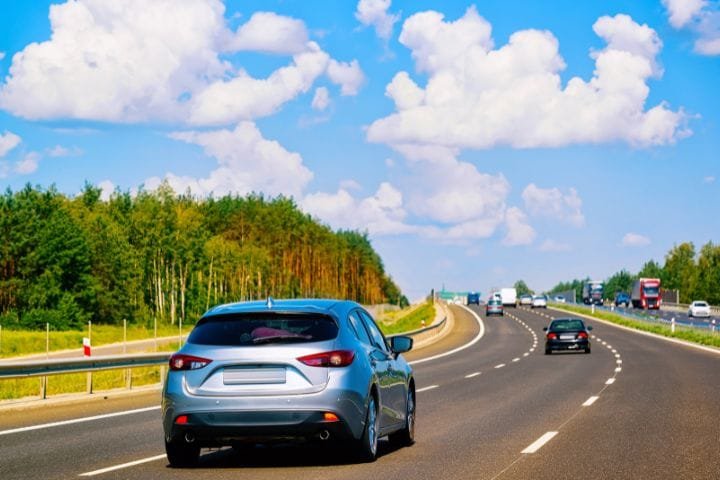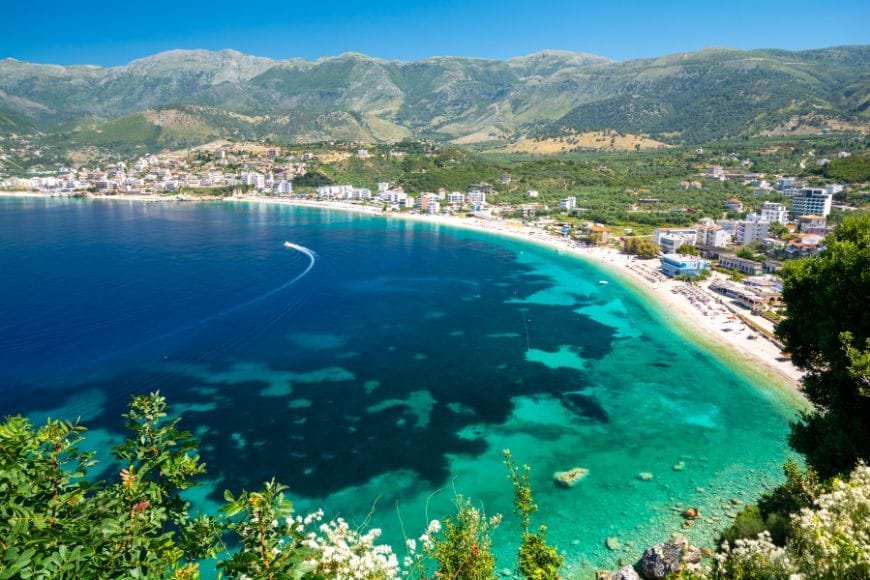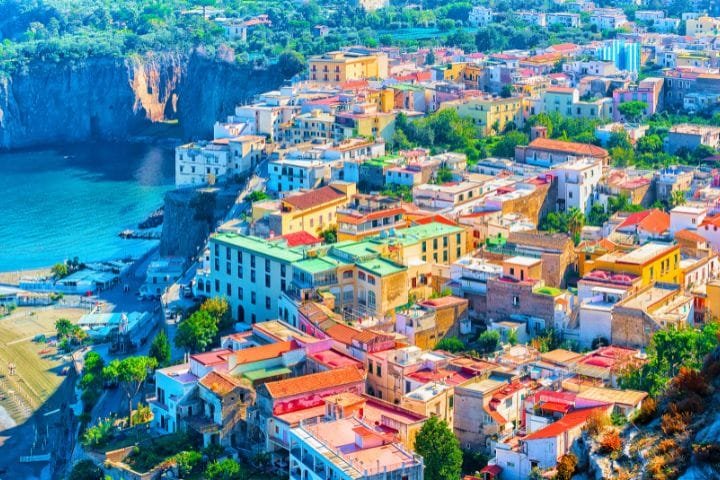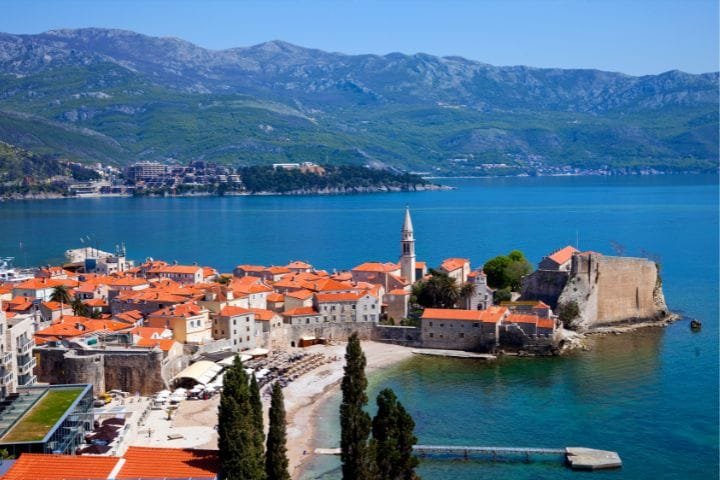Best Car Rental Companies in Italy for Foreigners (2025 Guide)

by Luca | Last Updated November 16, 2025

Choosing the right car rental company in Italy can make or break your dream Italian road trip! As someone from Florence who has helped countless foreign friends navigate our rental car system, I can tell you that not all rental companies are created equal, especially when it comes to serving international tourists.
From hidden fees that can double your daily rate to insurance policies that leave you vulnerable on narrow Tuscan roads, the wrong choice can turn your romantic Italian getaway into a financial nightmare.
Whether you’re planning to cruise the Amalfi Coast, explore Tuscan vineyards, or navigate the chaos of Roman streets, selecting the right rental company is crucial for both your budget and peace of mind.
The key is knowing which companies offer transparent pricing, reliable vehicles, English-speaking support, and fair treatment of international customers.
Let’s dive into the best car rental companies in Italy for Foreigners – from global giants with extensive networks to local gems that offer personalized service!
Top International Car Rental Companies in Italy
Hertz is honestly my go-to recommendation for first-time visitors to Italy. Yeah, they’re more expensive, but their English-speaking staff at major locations like Fiumicino and Malpensa airports are genuinely helpful. I’ve never seen them try to scam tourists, and their roadside assistance actually works when you need it.

Avis runs a close second, especially at airports. Their fleet is well-maintained, and they have this no-nonsense approach that I appreciate. My American cousin rented from them last summer and had zero issues driving from Rome to Milan. Their insurance policies are transparent, which is huge when you’re dealing with Italian bureaucracy.
Europcar offers good value for money and has solid coverage throughout Italy. They’re particularly strong in northern Italy around Milano and Venezia. The staff usually speaks decent English, and they don’t pressure you into unnecessary add-ons like some companies do.
Budget is exactly what it sounds like – budget-friendly but basic. Perfect if you’re experienced with Italian driving and don’t need hand-holding. Just be prepared for older vehicles and minimal customer service. My German friends love them because they just want cheap, reliable transportation.
Enterprise is growing here and bringing American-style customer service to Italy. Their locations are still limited, but where they exist, the service is excellent. They’re particularly good at explaining Italian driving rules to foreigners.
Best Italian Car Rental Companies for Tourists
Maggiore is Italy’s largest domestic rental company, and honestly, they’re fantastic once you understand how they operate. The key benefits include:
- Genuinely competitive pricing without hidden surprises
- Staff who understand Italian driving culture and can give real advice
- Excellent coverage of smaller cities and tourist destinations
- More flexible policies about minor damage than international companies
I always recommend Maggiore to visitors who want an authentic Italian experience. Their office near Santa Maria Novella in Florence has helped so many of my foreign friends over the years.

Sicily by Car is the absolute best choice if you’re heading south or to the islands. They specialize in tourism and really get what foreign visitors need:
- Detailed explanations of Sicilian driving conditions
- Pre-arranged ferry bookings for island travel
- Local knowledge about parking and restricted zones
- Fair damage assessment policies
Locauto offers incredible value for budget-conscious travelers. They’re not fancy, but they’re honest and reliable. Perfect for young backpackers or families who need basic transportation without frills.
Win Rent dominates northern Italy and has a strong presence around Milano, Torino, and the Dolomites. They’re particularly good for mountain driving and winter conditions.
Airport vs City Center Rental Locations
Airport pickup is almost always your best option, especially at major hubs like Rome Fiumicino, Milan Malpensa, or Venice Marco Polo. Here’s why:
- Modern facilities with English-speaking staff
- Immediate highway access without navigating city centers
- Better vehicle selection and availability
- Standardized pricing without local markup
But here in Florence, I often recommend the city center locations for specific situations. The Hertz office near the train station is convenient if you’re already staying in the historic center and want to pick up a car for day trips to Siena or the Chianti region.
Hotel delivery services are becoming more common, especially with luxury hotels. Several companies will bring the car to your hotel and handle the paperwork there. It costs extra (usually €50-100), but it’s worth it if you’re staying somewhere with difficult parking.
Train station locations work well for travelers arriving by high-speed rail. The offices at Florence Santa Maria Novella and Rome Termini are efficient, though parking can be challenging during pickup.

Pricing and Hidden Fees: What to Watch Out For
This is where tourists get burned, and I’ve seen it happen too many times. That €25/day rate you see online can easily become €70/day once all the fees are added. Here’s what to watch for:
Insurance add-ons are the biggest markup. Basic CDW has huge deductibles (€1,000-1,500), so they’ll push Super CDW for €20-25/day. Honestly? Get it. Italian roads are narrow, and even a tiny scratch can cost you hundreds.
Equipment fees add up fast:
- GPS rental: €8-12/day (just use your phone instead)
- Child seats: €8-15/day (consider bringing your own)
- Additional driver: €5-8/day per person
- Winter equipment: €15-20/day in mountain areas
Fuel policies vary significantly. “Full to full” is fairest, but some companies offer “full to empty” at inflated per-liter rates. Always choose full to full and plan your last gas stop accordingly.
Cross-border fees can be shocking. Taking a rental car from Italy to France or Switzerland often requires special permission and additional insurance. Some companies charge €100+ for this privilege.
Insurance Options: Protecting Yourself Abroad
Italian insurance requirements are strict, and as a local, I can tell you that our roads present unique challenges. Here’s what you actually need:
Third-party liability is mandatory and should be included in every rental. This covers damage you might cause to other vehicles or property. Italian repair costs are high, so don’t skimp here.
Collision Damage Waiver (CDW) reduces your liability for vehicle damage, but standard CDW often has €1,000-1,500 deductibles. Super CDW drops this to zero or €200 – absolutely worth it on narrow Italian streets.
Credit card insurance has limitations in Italy. Many cards exclude coverage here, and those that do cover often require you to decline all rental company insurance, which can be risky if something goes wrong.
Personal accident insurance isn’t usually necessary if you have travel insurance, but theft protection can be valuable in certain cities. Rome and Naples have higher vehicle crime rates than northern cities.
What’s typically excluded:
- Damage to tires, windshields, and undercarriage
- Damage from driving in restricted ZTL zones
- Interior damage and key replacement
- Damage while under the influence

Booking Strategies: Finding the Best Deals and Service
When booking rental cars in Italy, there are several approaches that can help you get the best combination of price and service. As someone who’s helped countless visitors navigate this process, I’ve learned that the key is understanding how different booking methods work and what they offer.
Comparison platforms like DiscoverCars.com are incredibly valuable for getting a comprehensive view of your options. These sites aggregate deals from multiple rental companies, letting you compare prices, vehicle types, and terms side by side.
What I love about platforms like this is that they often negotiate special rates that you can’t get elsewhere, and they provide clear breakdowns of what’s included in each deal.
The big advantage of using a reputable comparison platform is transparency. Instead of visiting five different rental company websites and trying to figure out their various pricing structures, you can see everything laid out clearly in one place.
Plus, these platforms often include customer reviews and ratings that give you real insight into what to expect.
Direct booking with rental companies still has its place, especially if you’re a loyalty program member or need to make special arrangements. But honestly, for most tourists visiting Italy, starting your search on a comparison platform makes the most sense.
You can identify the best deals and then decide whether to book through the platform or contact the rental company directly.
Package deals that combine hotels, flights, and car rentals can offer significant savings, but make sure the rental portion meets your specific needs. Sometimes these packages include restrictions or different terms than standalone rentals.
Timing your booking matters here in Italy. During peak season (June-September), prices rise significantly and vehicle availability becomes limited. I always recommend booking at least 3-4 weeks ahead for summer travel, and even earlier if you need an automatic transmission or a specific vehicle type.
The most important thing is reading the terms carefully, regardless of how you book. Understanding the insurance coverage, fuel policy, and cancellation terms upfront prevents unpleasant surprises later. A good booking platform will make these details clear and easy to compare between different options.
Customer Service and Support for International Travelers
This is where the international companies really shine. Hertz, Avis, and Europcar have invested heavily in English-speaking staff at major locations. But even Italian companies are improving:
Language support varies by location. Major airports and tourist cities usually have multilingual staff, but smaller towns might be Italian-only. Google Translate helps, but complex insurance discussions can get lost in translation.
24/7 roadside assistance is crucial in Italy. Our emergency number is 116, but rental companies often have their own dedicated lines. Keep these numbers in your phone:
- Hertz: +39 199 112211
- Avis: +39 06 41998
- Maggiore: +39 06 229411
Document verification can be tricky for foreigners. You need your passport, home country license, and an International Driving Permit. Some companies are stricter about the IDP than others – Hertz and Avis always check, while some Italian companies are more flexible.
Emergency procedures matter when you’re in a foreign country. International companies have standardized protocols, while local companies might require more explanation of Italian procedures.

Vehicle Selection and Availability
Size matters in Italy, and most tourists choose vehicles that are too large. Here’s my local advice:
Recommended sizes for Italian roads:
- Historic city centers: Economy or compact only
- Tuscan countryside: Compact or intermediate
- Highway driving: Any size, but parking is easier with smaller cars
- Mountain regions: Consider ground clearance and power
Manual vs automatic transmission is still an issue here. Automatics cost €10-15 extra per day and have limited availability. If you can’t drive a manual, book well in advance and specify automatic in your reservation.
Luxury vehicles are available but impractical for most tourist activities. A BMW or Mercedes looks great, but try parking it in Siena’s historic center or on the narrow Amalfi Coast road.
Family-friendly features to consider:
- Air conditioning (essential May-September)
- Sufficient luggage space for your group
- Child seat anchor points (ISOFIX standard)
- GPS or smartphone integration
- USB charging ports
Seasonal considerations matter here. Summer demand is huge, so book early. Winter requires snow tires or chains in mountain areas. Spring and fall provide the best combination of availability and weather.
Making the Right Choice for Your Italian Adventure
Look, after years of helping foreign visitors, my advice is simple: choose based on your comfort level and experience. First-time visitors should stick with international companies for the peace of mind and English support. Experienced travelers can save money with Italian companies that offer better local knowledge.
The most important thing is understanding what you’re paying for and why. Those insurance add-ons aren’t just profit centers – they’re protection against real risks on challenging Italian roads. That GPS rental might seem expensive, but getting lost in Rome traffic is worse.
My personal recommendation? If budget isn’t a major concern, go with Hertz or Avis at airport locations. If you want to save money and don’t mind a more Italian experience, try Maggiore or Sicily by Car.
Whatever you choose, read the contract carefully, take photos of any existing damage, and don’t let anyone pressure you into add-ons you don’t need.
The goal is to enhance your Italian adventure, not stress about rental car problems. Choose wisely, drive safely, and enjoy the incredible freedom that comes with exploring Italy at your own pace. Buon viaggio!
Plan Your Trip with Our Favorite Booking Tools
FAQs on Best Car Rental Companies in Italy for Foreigners
How to Rent a Car in Italy as a Tourist?
You need your driver’s license, an International Driving Permit (get before travel), a passport, and a credit card. Book online in advance, choose airport pickup for English service.
Get Super CDW insurance (essential), do a vehicle inspection with photos, and budget €50-80/day total. Minimum age 21. Avoid ZTL zones in historic centers (€150-200 fines), park outside old towns, and return with a full tank. The process takes 30-45 minutes at pickup.
Which car rental company is best for first-time visitors to Italy?
Hertz is my top recommendation for first-time foreign visitors to Italy. They offer excellent English-speaking staff at major airports, transparent pricing without hidden surprises, and reliable 24/7 roadside assistance. Avis runs a close second with similar benefits. While these international companies cost more than local alternatives, the peace of mind and customer support are worth it when you’re navigating Italian roads for the first time.
Are Italian car rental companies reliable for tourists?
Absolutely! Maggiore, Italy’s largest domestic rental company, offers excellent value and authentic local knowledge. They’re particularly good at explaining Italian driving culture and ZTL restrictions to foreigners. Sicily by Car specializes in tourism and provides detailed guidance for southern Italy and island travel. These companies often have better pricing than international brands and more flexible damage policies.
Should I book directly with rental companies or use comparison sites?
I recommend starting with reputable comparison platforms like DiscoverCars.com to see all your options and compare prices transparently. It’s a trusted comparison site that lets you instantly check prices from major international and local rental companies, often with lower rates than booking directly.
With transparent terms, free cancellation on most bookings, and real customer reviews, DiscoverCars makes renting in Italy easy and stress-free, especially for foreign travelers.
The transparency and customer reviews on these platforms are vital for making decisions, especially when dealing with different insurance options and terms.
What insurance do I really need when renting in Italy?
Get Super CDW (Collision Damage Waiver) that reduces your deductible to zero – it’s essential on narrow Italian roads. Standard CDW has deductibles of €1,000-1,500, which means you’re liable for substantial costs even for minor scratches.
Third-party liability insurance is mandatory and should be included. Don’t rely solely on credit card insurance in Italy, as many cards exclude coverage here or have significant limitations.
Personal accident insurance isn’t usually necessary if you have travel insurance, but theft protection can be valuable in cities like Rome and Naples.
What’s the difference between airport and city center rental locations?
Airport pickup is usually best for foreign visitors – modern facilities, English-speaking staff, immediate highway access, and better vehicle selection.
City center locations can be convenient for day trips if you’re already staying in the historic center, but parking during pickup can be challenging.
Some companies offer hotel delivery services (€50-100 extra), which is worth it for difficult parking situations. Train station locations work well if you’re arriving by rail, but the surrounding traffic can be intimidating for first-time Italy drivers.
What documents do I need to rent a car in Italy as a tourist?
You need three essential documents: your valid home country driver’s license, an International Driving Permit (IDP), and your passport. The IDP must be obtained before you travel (you can’t get one in Italy) and costs about $20 from AAA in the US.
You’ll also need a credit card in the driver’s name – debit cards are usually not accepted. Minimum age is typically 21, but expect young driver surcharges until age 25.
What’s the step-by-step process for renting a car in Italy?
First, book online in advance for better rates and availability. Upon arrival, go to the rental counter with all required documents. Staff will verify your documents and explain insurance options (get Super CDW). You’ll do a detailed vehicle inspection – take photos of any existing damage. Sign the rental agreement after understanding all terms.
The pickup process takes 30-45 minutes, so don’t schedule anything tight afterward. At return, fill up the tank nearby, take final photos, and do the return inspection with an agent when possible.
How much does it cost to rent a car in Italy, including all fees?
Base rates start around €25-35 per day, but expect total costs of €50-80 per day after essential add-ons. Super CDW insurance adds €15-25/day but is crucial for narrow Italian roads.
Additional drivers cost €5-8/day each, GPS rental is €8-12/day (use your phone instead), and young drivers under 25 pay surcharges of €15-25/day.
What insurance should I get, and what mistakes should I avoid?
Always get Super CDW insurance that reduces your deductible to zero – standard CDW has €1,000-1,500 deductibles that make you liable for expensive damage on narrow Italian roads.
Don’t rely solely on credit card insurance, as many exclude Italy coverage. Avoid common mistakes like: not getting an International Driving Permit, skipping proper vehicle inspection photos, not understanding ZTL restricted zones in city centers, ignoring fuel policy terms, and rushing through the rental agreement.
💬 We’d love to hear from you!
Have questions, tips, or personal travel stories to share? Drop them in the comments below — your insights help fellow travelers plan their adventures too.














Great article! I wish I had read this a while ago. We want to drive from Naples to Provence, France in a rental car. What is the best way to avoid very high fees? I was thinking of driving to Provence and then driving back to northern Italy to drop the car off. Then I would take the train back and rent a car in Provence. Please comment! Joe Dixon
Thanks so much, Joe, for reading — I’m really glad you liked the article! You’re absolutely right to think about those one-way drop-off fees. I’ve run into that myself, and they can be huge. From my experience, in Italy, you can usually drop the car off in any city where the rental company has an office, so it really depends on who you book with.
I usually suggest Milan or Turin (Turin is closer) as safe bets because every major company has branches there, and from both, you’ve got easy train connections to Provence.
If your rental company has offices in Ventimiglia or Sanremo (closer to the French border), that could work too and would save you some backtracking, but not all brands operate in those smaller towns. Personally, I always check the drop-off options before confirming my booking, as it saves surprises later.
That way, you still get your Italian road trip, avoid the high one-way fees, and can continue exploring Provence stress-free.
Wishing you a fantastic trip, you’re going to love the drive and the mix of Italy and Provence!🌟Buon Viaggio!
Hi Luca, I enjoyed reading this article, very informative.
I will be visiting Puglia next May, and have read some awful reviews about intimidating personnel at car rental desks when people have been returning or picking up cars, like, being bullied into paying for damage that wasn’t done by the renters. I have read a little about an aggregator called Sunny Cars. Have you got an opinion on that company? I have rented cars all over the place and have never had an issue, but reading some people’s stories is now making me very worried. FYI, I would like to pick up the car in Lecce, and drop it at Bari airport. I am aware there will more than likely be a one-way fee.
Thank you for your time,
Ruth
Hey Ruth! Thanks so much for reading, and I’m really glad you found the article helpful!
I completely understand your concern, car rental desks in Italy (and Europe in general) can sometimes feel intimidating, especially if you’re not used to how damage deposits and inspection forms are handled. The good news is that most issues come down to poor communication or unclear documentation, not actual scams.
I haven’t personally used sunny cars, but they’re a legitimate aggregator that works with well-known local providers.
If you prefer comparing options directly, I usually book through DiscoverCars — they’re transparent with insurance and show reviews per supplier, which helps avoid surprises.
Your Lecce to Bari Airport route is beautiful, and yes, a one-way fee is normal but not excessive if booked in advance. Just double-check that it’s clearly listed in your quote before confirming.
You’ll be absolutely fine, just take photos of the car when you pick it up and drop it off (standard practice), and you’ll have peace of mind. Enjoy Puglia — it’s such an incredible region to explore by car! Buon Viaggio :)!